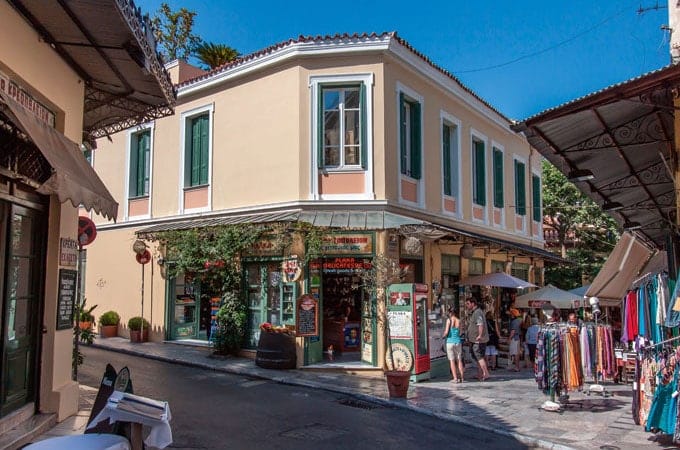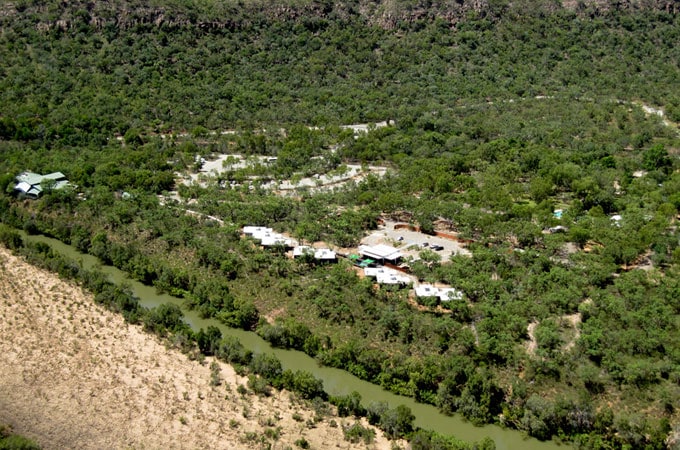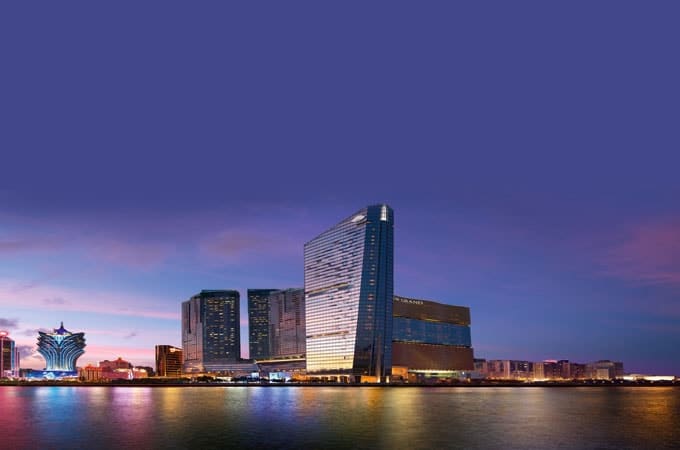Turkey is a country brimming with remarkable landmarks, where ancient history and stunning natural beauty come together to offer unforgettable experiences. From the renowned Hagia Sophia in Istanbul to the breathtaking landscapes of Cappadocia, and from the ancient ruins of Ephesus to the vibrant bazaars and grand palaces, each site reveals a unique facet of Turkey’s rich heritage and spectacular scenery. This guide to some of Turkey’s most incredible landmarks will navigate you through the top cultural sites, ensuring your journey vacation or honeymoon through Turkey is truly magical.
Iconic Turkish Landmarks in Istanbul:
Most adventures and holidays in Turkey begin in Istanbul, and you’ll want to set aside several days to explore this vibrant city’s incredible landmarks. Here are must-see cultural and historical sites to visit while in Istanbul.
Hagia Sophia Grand Mosque

Walking through the doors of the Hagia Sophia, you immediately feel the weight of history envelop you. Originally constructed as the Megale Ekklesia (Great Church) in 325 CE by Constantine I and reconstructed by Justinian I in the 6th century, this architectural marvel has been a Christian basilica, a mosque, a museum, and once again a mosque as of 2020. Its journey through time is a testament to Istanbul’s ever-evolving identity.
Architectural and Artistic Highlights:
Dome: The monumental dome, rising 55.6 metres high with diameters of 31.87 metres (North-South) and 30.86 metres (East-West), is a feat of ancient engineering. Standing beneath it, you can’t help but marvel at the ingenuity of those who built it.

Decorations: Inside, the marble columns and intricate 9th-century mosaics tell stories of intertwined faiths and empires. Each element, from the Loggia of the Empress to the Viking Inscription, whispers tales of a bygone era.
Open daily, Hagia Sophia remains a living museum, inviting exploration and reflection with its blend of Christian and Islamic traditions.
The Blue Mosque: Architectural Masterpiece

Just a stone’s throw from Hagia Sophia and the Byzantine Hippodrome, the Blue Mosque (Sultan Ahmed Mosque) is the epitome of Ottoman grandeur. Designed by Sedefkar Mehmed Aga and completed in 1617, Sultan Ahmet I commissioned it when he was just 13 years old.
Architectural and Decorative Highlights:
Exterior Elegance: The mosque’s exterior, with its numerous windows, blind arcades, and elevated entrances, exudes architectural grace. Its six minarets, a point of contention at the time for their rivalry with Mecca’s sacred mosques, add to its unique charm.

Interior Splendour: Step inside to be greeted by over 20,000 Iznik tiles, famed for their blue, green, and turquoise hues. The kaleidoscope of colours, illuminated by 200 stained glass windows, creates an otherworldly atmosphere in the vast prayer hall.
Visitors are welcome outside prayer times, making it an essential stop in Istanbul’s Sultanahmet district, where history and culture converge.
The Grand Bazaar: A Shopper’s Paradise

Entering Istanbul’s Grand Bazaar feels like stepping into a different era, where history, culture, and commerce blend seamlessly. Built in 1455 by Ottoman Sultan Mehmet the Conqueror, this market initially aimed to boost the economy through textiles and jewels.
Today, the Grand Bazaar covers 30,700 m², with 61 covered streets and over 4,000 shops. Each street is dedicated to specific merchandise, creating a unique shopping experience.
Distinct Sections of the Grand Bazaar:
Old Bedesten (Cevâhir Bedesten): The luxury trade hub, dealing in precious textiles and jewels since its construction between 1460-61.
New Bedesten (Sandal Bedesten): This section, erected in the 16th century, focuses on textiles and showcases Ottoman fabric traditions.

The variety is endless, from sparkling jewellery and handcrafted furniture to luxurious carpets and leather goods. The Grand Bazaar is a lively cultural centre, attracting between 250,000 and 400,000 visitors daily. Open Monday through Saturday, it’s easily accessible by tram and metro and offers a unique shopping experience rooted in Istanbul’s cultural and historical fabric.
Related: A complete travel guide to Turkey for two!
The Basilica Cistern: An Underground Odyssey

Beneath Istanbul’s bustling streets lies the hidden wonder of the Basilica Cistern. Built in 532 AD by Emperor Justinian, this subterranean marvel showcases Byzantine engineering and architecture. Its 336 majestic columns, each with intricately carved capitals, stand as silent witnesses to the past.
Architectural Majesty: As one descends into the Basilica Cistern, the air cools, and the dim light reveals symmetrical rows of columns. The grandeur of this underground palace is breathtaking, evoking a sense of awe at the ingenuity of Byzantine craftsmanship.
Rediscovery and Renewal: Hidden for centuries, the cistern was rediscovered in 1545 by scholar Petrus Gyllius. It was used as a dumping ground under Ottoman rule, and its true significance was only recognised in modern times, leading to extensive restoration efforts.
Today, visitors can explore the cistern, marvelling at its vastness and the ghostly carp gliding through its waters. The Basilica Cistern is a testament to Istanbul’s resilience and the enduring legacy of Byzantine architecture.
Turkey’s Iconic Landmarks and Cultural Marvels: Must-Visit Sites Beyond Istanbul
Ancient City of Troy

The Ancient City of Troy, located in modern-day Turkey, merges myth and history. It is renowned for its association with the Trojan War, as narrated in Homer’s epic poems, the Iliad and the Odyssey. Once a fortified capital of the Troad, Troy served as a vital trade hub linking Europe and Asia along the west Anatolian coast.
Troy spans nine periods from around 3500 B.C., older than previously thought by 600 years. Its peak during Troy VI and VII (c. 1900 to 1100 BCE) saw growth with the introduction of domesticated horses to the Aegean region. Destroyed in both Troy VI (earthquake) and Troy VIIa (enemy attack), the city was abandoned around 1000 B.C. but later resettled by Greek colonists in the 8th century B.C., revived by its Homeric fame.

The decade-long Trojan War, fought over Helen, highlights Troy’s cultural and military importance. The Iliad recounts events of its tenth year, including the Greek victory with the wooden horse, immortalising the city in literature and medieval legends, enhancing its heroic narrative.
Today, Troy remains a UNESCO World Heritage site, attracting global tourists. Excavations reveal a city inhabited for nearly 4,000 years, offering insights into its rich past, from founding through prosperity, destruction, and enduring historical significance.
Selimiye Mosque

Perched in the heart of Edirne, Turkey, the Selimiye Mosque and its Social Complex are a crowning achievement of Ottoman architecture. Commissioned by Sultan Selim II and masterfully designed by architect Sinan in 1575, this architectural gem was recognised as a UNESCO World Heritage Site in 2011.
Dominating the skyline, the mosque’s 31.22-metre dome, supported by eight intricate squinches and piers, is a testament to Ottoman engineering brilliance. Its four towering minarets, each soaring 71 metres and adorned with three balconies, blend spiritual aspirations with aesthetic elegance. Step inside, and you’ll find a space bathed in light from 999 windows, highlighting the rich Iznik tiles, marble stonework, and delicate calligraphy that create an atmosphere of serene grandeur.

The interior dazzles with 16th-century Iznik tiles featuring saz leaves and Chinese cloud motifs. Throughout, epigraphs emphasise Allah and Muhammad’s unity, grounding the mosque’s spiritual significance. This open-plan design set a precedent, influencing iconic structures like Istanbul’s Laleli Mosque and South Africa’s Nizamiye Mosque.
The Selimiye Mosque is more than just a place of worship; it’s a vibrant part of Edirne’s landscape. Nestled alongside the Old Mosque and Uc Serefeli Mosque, it includes a serene courtyard, a fountain, and a bustling social complex with madrasas, markets, and a library. This architectural masterpiece connects the past and present, providing visitors with a glimpse into the rich history and artistry of the Ottoman Empire.
Pamukkale’s Thermal Waters

In Turkey’s Denizli province, Pamukkale, a UNESCO World Heritage Site, fascinates visitors with its white travertine terraces resembling a cascading cotton castle. Fed by calcium carbonate-rich hot springs over millennia, these formations owe their existence to geothermal sources and underground aquifers collecting rainwater and snowmelt.
Travertine terraces form from calcium carbonate deposition by thermal springs. Geothermal sources heat water rich in calcium bicarbonate, silica, and sulphur, contributing to terrace growth and therapeutic properties. Pamukkale’s terraces, shaped by tectonic and hydrogeological forces over millennia, house the ancient city of Hierapolis, founded in the 2nd century B.C.

Pamukkale’s thermal waters, ranging from 35°C to 100°C, have treated skin and circulatory ailments since ancient times. UNESCO’s recognition celebrates both natural beauty and human history, as reflected in Hierapolis’ archaeological finds displayed at an on-site museum.
Mount Nemrut

Standing 2,150 meters in Adıyaman Province, Turkey, Mount Nemrut has been a UNESCO World Heritage Site since 1987, showcasing ancient civilisation’s grandeur. At its summit lies colossal statues and a presumed royal tomb from the 1st century B.C., created by King Antiochus I of Commagene.

The summit boasts five giant seated limestone statues of deities flanked by lion and eagle guardian statues. A 49-meter tumulus, believed to be Antiochus’ burial site, adds to the site’s mystical aura, with terraces and processional routes offering unique perspectives.
Mount Nemrut merges Hellenistic and Persian influences, symbolising Antiochus I’s political and religious programme. Accessible via an hour’s drive from Kahta along the Adıyaman Diyarbakır Yolu/D360, the climb rewards with sunrise or sunset views of Turkey’s cultural and natural heritage.
Pasabag Fairy Chimneys

In Cappadocia, the Pasabag Fairy Chimneys highlight a captivating mix of nature’s artistry and human creativity. Known as ‘Monks Valley,’ these distinctive geological formations are carved from volcanic tuff, shaped over centuries by wind and water into tall, slender columns with conical tops.
Related: The best places in the world to propose

The soft, tuff rock, formed from volcanic ash, has eroded into these striking shapes. Early Christian hermits took advantage of this unique landscape, carving homes and monasteries into the chimneys, showcasing both their spiritual devotion and architectural skill.
Today, these fairy chimneys reflect the interplay of natural forces and human ingenuity. Ongoing preservation efforts help maintain this surreal landscape, inviting visitors to explore and appreciate the extraordinary scenery of Cappadocia.
Sumela Monastery

Cliffside in Turkey’s Pontic Mountains, Sumela Monastery, or Sümela Manastırı, showcases ancient engineering and spiritual devotion. Founded around AD 386, it has been a beacon of the Greek Orthodox faith for over 1600 years, overlooking Trabzon Province’s lush Altındere Valley within Altındere National Park.

The Rock Church and Chapels, adorned with 18th-century frescoes depicting biblical scenes, reveal Byzantine artistic heritage. Living quarters, including kitchens, a guesthouse, and a library, offer insight into monks’ daily lives. The sacred spring, believed to have healing properties, underscores the monastery’s spiritual significance.
Anitkabir

Anıtkabir, in Ankara, is the grand mausoleum of Mustafa Kemal Atatürk, Turkey’s first president and visionary founder. Completed in 1953, it symbolises Turkey’s transition from empire to republic, with architectural grandeur and symbolic significance.
Designed by Emin Onat and Ahmet Orhan Arda, Anıtkabir won international acclaim and symbolises Turkey’s east-west cultural balance. Peace Park, encompassing 700,000 square meters, reflects Atatürk’s vision for peace and unity. Anıtkabir’s monumental simplicity straddles the east-west cultural crossroads, symbolising Turkey’s modern identity.
Derinkuyu Underground City

Located near modern Derinkuyu in Nevşehir Province, the Derinkuyu Underground City provides a remarkable glimpse into Turkey’s hidden history. This extraordinary subterranean marvel reveals how ancient communities managed to survive and thrive beneath the surface during times of conflict.
Plunging 85 meters into the earth, the city could accommodate up to 20,000 people and their livestock and supplies. The complex was a fully self-sufficient underground world featuring stone doors that could seal off each level for added security. Visitors can explore an array of amenities, including wine and oil presses, stables, and even schools.

The ingenuity of Derinkuyu’s creators is evident in its clever design, with ventilation shafts ensuring a flow of fresh air and intricate escape routes. This captivating site not only highlights impressive architectural skills but also provides a unique insight into the resilience and resourcefulness of its inhabitants.
Once a Byzantine fortress against Arab Muslim invasions, its connection to Kaymakli’s tunnels underscores its strategic significance. Recognised as a UNESCO World Heritage Site since 1985, Derinkuyu continues to attract visitors from around the globe, drawn to its labyrinthine passages and enduring legacy.
Kaymakli’s Tunnels

Kaymakli Underground City, located near Derinkuyu, offers another fascinating example of subterranean ingenuity. This expansive underground complex features a labyrinth of tunnels and rooms, similar to those in Derinkuyu, designed to house thousands of people during times of conflict. The city was meticulously planned, with spaces for living, storage, and worship, all interconnected by a network of passageways.
The tunnels served as vital escape routes and protected residents from invasions, reflecting the strategic brilliance of their creators. The connection between Kaymakli and Derinkuyu’s underground networks underscores these ancient cities’ remarkable scale and sophistication. Together, they reveal how communities adapted to their environment and challenges, creating secure and self-sufficient habitats beneath the earth.
As a UNESCO World Heritage Site, Kaymakli continues to draw visitors intrigued by its intricate design and the resilience of its historical inhabitants.
Aphrodisias

In southwestern Turkey, Aphrodisias is a remarkable archaeological treasure and a UNESCO World Heritage Site. It is celebrated for its marble quarries and Hellenistic artistry dating back to the 3rd century B.C.
The ancient city’s layout reveals a grid of streets encircling grand temples, a theatre, and bath complexes. Known for its worship of Aphrodite, Aphrodisias is famed for its exquisite sculptures and Roman influence. From its origins as a pagan stronghold, it evolved into a significant Christian centre under Roman rule and continued to thrive through the Byzantine and Seljuk periods. Today, the museum’s artefacts highlight the city’s artistic achievements, vibrant religious life, and role as a melting pot of cultures.
Göreme Open Air Museum

In Cappadocia, the Göreme Open Air Museum is a UNESCO World Heritage Site that brings Byzantine monastic life to vivid life through its rock-cut churches and frescoes, a tradition preserved since 1985.
The site features over 30 ancient churches and chapels, ingeniously carved into the region’s iconic fairy chimney rock formations. These churches are adorned with frescoes from the 10th to 12th centuries, offering a glimpse into Byzantine religious art and the spiritual practices of the time.
Originally a refuge for Christians fleeing Arab invasions, the museum provides valuable insights into monastic life amid Cappadocia’s unique and stunning landscape. This captivating site reveals the enduring significance of religious and cultural heritage in this extraordinary region.
See more: A world of Turkish Delights – what to see and do in Turkey




